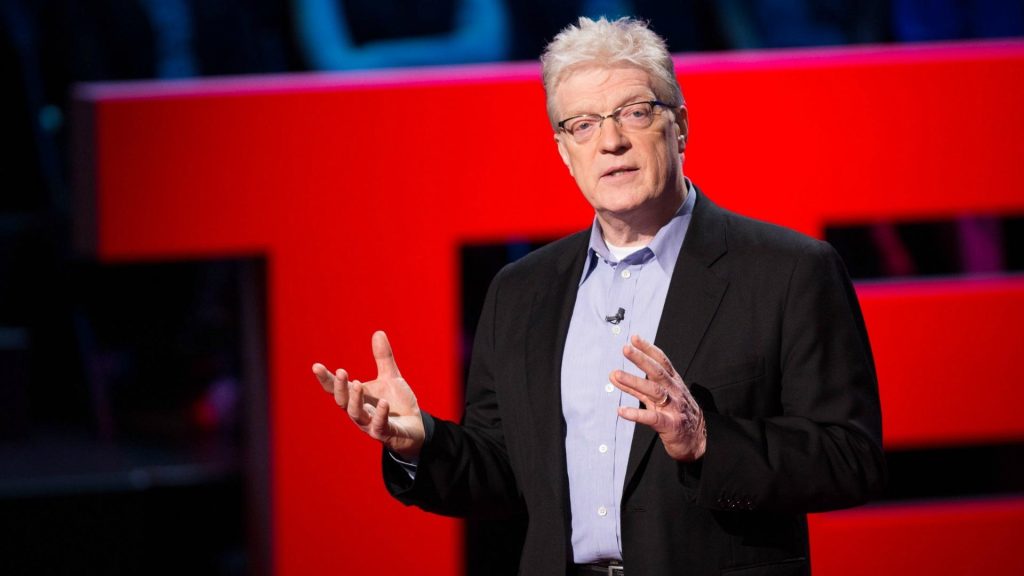With a quick search or the assistance of your AI assistant, such as ChatGPT, you’ll uncover that the title for the most popular Ted Talk goes to Sir Ken Robinson’s 2006 presentation, “Do Schools Kill Creativity?” Boasting over 75 million views, the talk continues to engage, inspire, and provoke thought across the globe.
Now, let’s delve deep into Robinson’s talk. We will examine it through the lens of masterful storytelling and persuasive presentation techniques. Our aim? To glean clear steps and techniques that you, as a founder, entrepreneur, or CEO, can adopt to boost your influence and leadership.
This insight proves especially beneficial if you’re part of the tech industry, where public speaking doesn’t always take center stage. However, as Sir Ken Robinson’s speech illustrates, effective communication can be an instrumental tool to leverage. So, let’s analyze and learn from his presentation to enhance our speaking skills and take leadership to new heights.
Not least, I frequently work out speeches with my clients for presentations, board meetings, negotiations, and public appearances, so I know this is one of the most powerful skills that you can have and master.
Table of Contents
The Five Main Story Types: Identifying Sir Ken’s Archetype
In Western culture, narratives typically fall into one of five fundamental story types or archetypes. Let’s take a closer look:
- The Quest: An adventurous journey towards a significant goal.
- Stranger in a Strange Land: The protagonist finds themselves in an unfamiliar environment and must adapt.
- Rags to Riches: A story of transformation from poverty to wealth, or obscurity to prominence.
- Revenge: Driven by a need to right a wrong, the hero seeks justice or vengeance.
- Love Story: Centered on romantic relationships, with various potential outcomes.
Note!: the archetype of the Quest is sometimes referred to as the "Holy Grail", signifying the pursuit of an ultimate goal, a prize so exceptional that it justifies a life-long journey.
Lots of people have tried out others, but most often they turn out to be simply forms of the most fundamental story, the Quest. And just to clarify an issue right from the start, “comedy” and “tragedy” are not stories. They are story outcomes.
The difference between Romeo and Juliet and Pretty Woman is that the former is a tragedy (both the hero and heroine die in the end) and the latter is a comedy (Edward and Vivienne will live happily ever after). Both are love stories.
Similarly, “the burning platform” is not a story; it is the beginning of (usually) a Quest.
Nick Morgan
Now, let’s determine which one resonates with Sir Ken Robinson’s narrative in his influential TED Talk.
Placing Sir Ken Robinson’s Narrative in the Right Archetype
At first glance, it might seem more compelling to ask, What was the intended message of the most popular Ted Talk of all time? However, I find it more intriguing to investigate the topic from the audience’s point of view. What was the intended message of the speaker to the audience? So, what sparks people’s interest? Creativity, or the future of the education system? Or perhaps something else?
When scrutinizing Sir Ken Robinson’s esteemed TED Talk, “Do Schools Kill Creativity?”, through the lens of these five primary story types, it closely aligns with “The Quest”.
Robinson’s narrative revolves around a critical mission: reforming the education system to foster creativity instead of inhibiting it. His talk encapsulates the quest archetype, highlighting a problem (the stifling of creativity in schools) and launching a crusade to challenge and overhaul the status quo. His ‘Holy Grail’? An education system where creativity isn’t merely recognized but actively encouraged and nurtured, allowing the full potential of students to blossom. This firmly places Robinson’s TED Talk within the narrative archetype of “The Quest”.
Understanding the Significance of Creativity
Robinson affirms that creativity is as vital as literacy and should be accorded due seriousness. In our unpredictable world, where we can’t anticipate what will transpire in the next five years, children need to be educated to brace themselves for any eventuality. This becomes even more pertinent with the rise of AI. Now, the words of Sir Ken Robinson ring truer than ever before.
Robinson observes that if we cannot afford to be wrong, we won’t conceive anything original, and many adults seem to lose this capacity. As per Robinson, we aren’t merely growing out of creativity, but rather, we are being educated out of it.
Robinson’s Content & Delivery: Simplicity Is Key
The content of Robinson’s speech is intriguing and compelling, served in a simple and digestible manner. He unfolds his thoughts sequentially and coherently, keeping his delivery accessible and straightforward. This is an eloquent demonstration of the power of simplicity, one of the secret tools in effective storytelling and public speaking.
The beauty of Robinson’s delivery style in the most popular TED Talk is in his pace. He doesn’t rush. He cracks jokes, takes pauses, engages with the audience, and isn’t just reciting a script – he’s there, present, focused, attentive, and clear about his purpose. He uses body language, gestures, and pauses effectively to complement his speech. This level of engagement not only captures the audience’s attention but also adjusts the room’s atmosphere and brings the audience back to him when needed.
It’s noteworthy that Robinson has a unique way of interacting with his audience that mirrors a personal conversation. He poses questions, pauses as if expecting a response, then rephrases the question and waits again, making direct eye contact with individual members of the audience. This technique of addressing each person individually rather than as a collective audience adds a layer of personal touch to his presentation, underlining the effectiveness of his approach.
Unpacking Confidence & Humor: Essential Elements of Great Storytelling
Robinson’s confidence is palpable and he isn’t afraid to show it. Confidence reassures an audience and is an appealing quality they expect in a leader, speaker, or entertainer. He sprinkles humor throughout his talk, which, combined with his British accent and well-timed pauses, creates a compelling and engaging narrative.
He even laughs at his jokes and always gives pause for people to enjoy each segment fully.
Robinson’s use of analogies, metaphors, and stories paints vivid images in the minds of the audience, another testament to his skills as a masterful storyteller.
Embracing Flaws: Creativity’s Best Friend
The most popular TED Talk speech isn’t perfect, and there are elements that public speaking courses or gurus might criticize.
However, Sir Ken’s authentic delivery and the simplicity of his narrative turn potential flaws into integral parts of his speech. He embodies the principle he advocates for: rather than stifling creativity by fearing mistakes, he embraces them. Just imagine a nervous, unsure individual delivering the same speech. It would be a catastrophe. But he is confident, ready to embrace any joke,be in the moment and adjust accordingly.
That makes even an occasional “hum” be forgiven.
Robinson’s Awareness & Presence: An Example for Aspiring Speakers
One of Robinson’s distinguishing traits is his acute awareness and presence. Right from the beginning of his speech, he connects directly with the event, making light-hearted jokes about leaving. He acknowledges the time spent at the conference, the fact that he’s the concluding speaker, and gives a nod to the other speakers. This shows his respect for the event and demonstrates his thoughtfulness, a trait rarely seen in speakers as they often fear they might lose control if they deviate from their speech or introduce spontaneous thoughts.
Final Thoughts: A Great Study Case
The most viewed TED Talk, “Do Schools Kill Creativity?” is an excellent case study for anyone wishing to improve their public speaking skills or to understand the art of storytelling better. It was for me and I took this mission on like being a study case.
By closely examining and learning from Sir Ken Robinson’s approach, aspiring speakers and leaders can gain invaluable insights into the power of simplicity, the importance of engagement, and the effectiveness of authenticity in storytelling.

Are you interested in working together?
If you’re ready, check out this page and schedule a call.
Cristina Imre – Global Executive Coach Who Cares & Helps You Ride the Dragon Road with Ease & Joy

